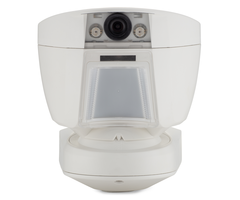Wireless Outdoor Motion Detecting Sensors



With their weatherproof and water-resistant designs that protect against dust and moisture, outdoor wireless motion sensors are appropriate for almost any type of environment. They represent one of the best tools for monitoring any sort of activity that occurs outside a home or business, whether that be unwanted intruders walking on the premises or unauthorized vehicles driving onto your property. Any time a substantial amount of motion is detected, the device will activate and send a signal to the security system. Based on how the sensor has been programmed with the panel, the end result can be anything from a loud siren, turning on a designated light or even requesting immediate police dispatch from the central station.
In order to send signals to the security panel, an outdoor wireless motion sensor will utilize methods of RF communication. Outdoor sensors typically require extra strong RF signals, due to the fact that the device will usually need communicate with a security system located inside the building. This means that the signal will most likely need to pass through walls and other objects. Many users with outdoor wireless motion sensors will utilize wireless repeaters with their setup in order to give the wireless signal from the motion sensor the best chance of reaching the security panel. Also, remember to test the sensor first.
In addition to their strong RF signals, outdoor wireless motion sensors are also known for being incredibly tough and durable. This is necessary for the device to survive any inclement weather that may be present in the area. If rain or outdoor debris were able to get inside the device, it could cause serious damage, and the device may need to be replaced. If a standard motion sensor were placed in an outdoor environment, this would undoubtedly occur after a short period of time. But with outdoor motions, the inner workings will be fully protected from almost any type of outdoor hazard, including heavy rain, snow or extreme temperatures.
Most outdoor wireless motion sensors will detect motion using passive infrared (PIR) technology. This involves sensing for any changes in infrared energy in the area. If a substantial change in infrared energy is detected, the sensor will assume that an intruder is present, and the device will send a signal to the panel to perform the programmed response. A user can alter the pulse count of their outdoor wireless motion to adjust its sensitivity. A higher pulse count will require a greater change in infrared energy to set off the device, thereby making decreasing its sensitivity. On the other hand, a lower pulse count will make the the device less sensitive, as a smaller change in infrared energy will be needed to trigger the sensor. Many users also adjust the sensitivity and scope of their outdoor motions by changing the mounting location, swapping out the lens or covering up a portion of the lens. Any of these methods can be great for configuring the usability of an outdoor wireless motion sensor.


